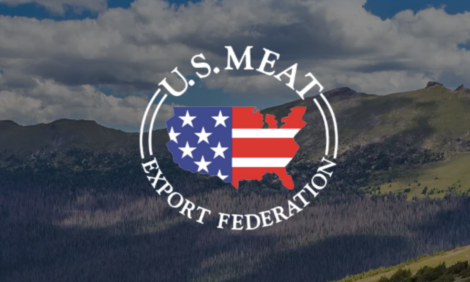



Transferring Genetic Improvement
CANADA - The rate of genetic change in the nucleus population is the basis by which genetic improvement is measured and evaluated, writes Bob Kemp, PhD P.Ag, Vice President Genetic Programs and Research & Development, Genesus.However maximizing the rate of genetic improvement at the nucleus is only part of the story. The real focus of a genetic improvement program needs to include how quickly genetic change at the nucleus level can be passed on to the commercial industry---the end-user of the technology of genetic improvement.
The time it takes to transfer genetic improvement from the nucleus to commercial herds, commonly referred to as genetic lag can vary significantly depending on the program in place to move improvement to the customer.
While there are some well-known factors that reduce genetic lag, the success is based on two specific issues:
- Are the factors coordinated into a program so they are complimentary and not working at odds with each other?
- Is the program for transfer of the genetic improvement being implemented effectively?
Some of the factors important in transfer of genetic improvement include, sufficient nucleus population sizes to ensure genetic superiority and volume of boars and gilts transferred to multiplier and customer levels, replacement of boars at AI centers to maximize genetic value, enhanced female replacement rates at multiplier and commercial levels and the number of levels between the nucleus and the commercial level (See, 1995).
Genesus focuses on transfer of genetic improvement to the customer in a coordinated and effective program that is implemented with dedicated staff. Large genetic nucleus populations are at the base of this program.
This ensures that boars selected for customer to produce commercial pigs in the case of Duroc or for making F1 gilts either in multiplier herds or within-system multiplication are mostly littermates to boars and gilts selected for the nucleus and are of equivalent genetic merit to nucleus replacements.
In addition, the large numbers of boars and gilts tested ensures that volume needs for boars and gilts are achieved. Also this program removes a multiplier level required to produce the volume of boars needed and thus greatly shortens the time to move the genetic improvement from the nucleus to the commercial level.
Additionally, all boars in AI units are controlled by Genesus and all AI inventories are reviewed and replacements selected on a quarterly basis to maximize genetic value of the boars available in the AI unit. These are some of the critical factors that are part of the program.
Of course the real value is measured in the improvement in the commercial population over time. Recently the 2014 Swine Management System (SMS) report was released. The SMS report summarizes, on a comparable basis the production records of 758 herds totaling over 1.3 million sows.
One statistic that SMS reports is the average trend in the last 3 years. While this trend is not solely from genetic change certainly the genetics is a component. For example an important trait for commercial producers is number of piglets born alive per litter for females farrowing. For Genesus herds in the SMS system the trend is 0.13 piglets born alive per litter per female farrowed. Assuming 2.4 litters per sow per year results in an extra 0.31 pigs born alive per female per year.
What is the impact of this trend? Successful programs will maintain improvement over time so assuming a 5-year period, 90% survival to weaning and an average weaned pig value of $40 this will result in an extra $55 of income per sow.
That level of economic impact demonstrates the importance of ensuring genetic improvement is transferred to the customer level. Genesus continues to refine and make it’s genetic program more effective, especially the transfer of genetic improvement component.
References
See, MT. 1995. What the commercial producer needs to know about genetic improvement. Animal Science Facts, North Carolina State University, ANS02-820S.









